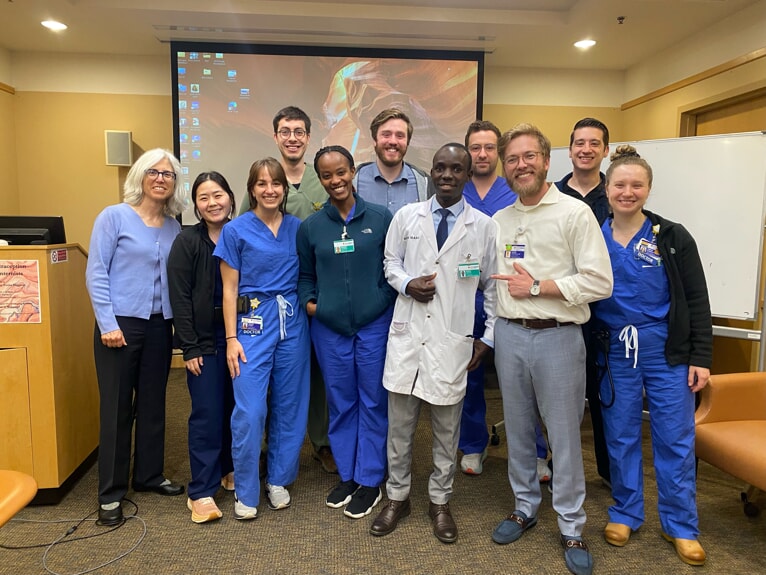What Makes Us Special
Balanced support for all paths
-
General medicine - Our rich continuity clinic experience with a diverse patient population
has successfully led our graduates to practice in different primary care
models, home care, and geriatrics.
-
Hospitalists - Our graduates have become hospitalists in multiple different systems,
from small rural centers where they may be the only internist on-site,
to large urban centers, collaborating with many different subspecialties.
Our extensive procedural opportunities and POCUS instruction provide the
optimal training for practice in any hospital setting.
-
Subspecialty - Our residents are successful in obtaining fellowship in multiple specialties,
pursuing careers in clinical practice, academics, and research. Many have
stayed in Portland or returned after their fellowship training.
-
Global Health - Our graduates have taken paths leading to different countries, most recently
in Peru, Malawi, and Haiti. Our residency supports a yearly educational
exchange with a teaching hospital in Uganda.
-
Leadership - Many of our graduates take roles as medical directors of their clinics,
hospitalist groups, or quality departments, as well as leadership roles
with regional and national organizations.
-
Educators - The culture of learning and teaching inspires our residents to seek careers
that include teaching, whether it be formal faculty roles or precepting
with medical students.

Mentorship
Our core faculty’s principal focus is on our residents.
-
Low resident to faculty ratio - We have 14 core faculty and dozens of part-time and volunteer faculty
for our 31 residents—an exceptionally rich commitment.
-
Structured mentorship - Each resident is assigned a faculty advisor throughout their residency.
Residents may opt into other mentorship experiences to focus on specific
areas of growth such as efficiency in patient care or preparing for the
Boards, fellowship mentorship or career coaching.
-
Informal mentorship - As the sole residency at our institution, our residents work directly
with the faculty 1:1 on the wards, in the clinic and on subspecialties.
This provides many chances to personally know the academic faculty who,
in turn, can assist you in achieving your educational and career goals.
-
Career planning - We provide an ongoing structured curriculum to help residents along their
career decision process. We provide multiple avenues for mentorship with
career counseling, fellowship applications, CV development, and interviewing
skills. We provide a 3-year mentorship program for residents interested
in applying for subspecialty fellowship.
-
Personal and professional growth curriculum - Residents learn skills in maintaining wellness and resiliency both during
residency and beyond.
Curriculum
Special curricular features that will uniquely enhance your education.
- Unique progressive responsibility structure on the wards. R2s spend their
initial rotations working 1:1 with a hospitalist, without supervising
an intern. This allows them to focus on their own learning and management
of their patients. They progress to teams with 1 intern, then by R3 year
progress to 2-intern teams and managing a census of 14 patients.
- Procedure rotation with extensive opportunities for procedures during critical
care rotations.
- Small group noon conferences.
- Ambulatory curriculum with experiential, hands-on learning labs and academic
half-days during integrated ambulatory rotations.
- Longitudinal quality improvement and evidence-based medicine curriculum.
- Strong focus on wellness and resiliency, with longitudinal curriculum,
special class-specific retreats and additional resources.
- Collaborative learning opportunities with faculty mentors including shared-practice
clinic experiences.
- Residents as Teachers special certificate program for residents dedicated
to enhancing their teaching skills.
- Support for scholarly activity and research, with opportunities for presentations
at regional and national meetings.
- Point of care ultrasound training that allows residents to gain certification
in specific organ systems.
